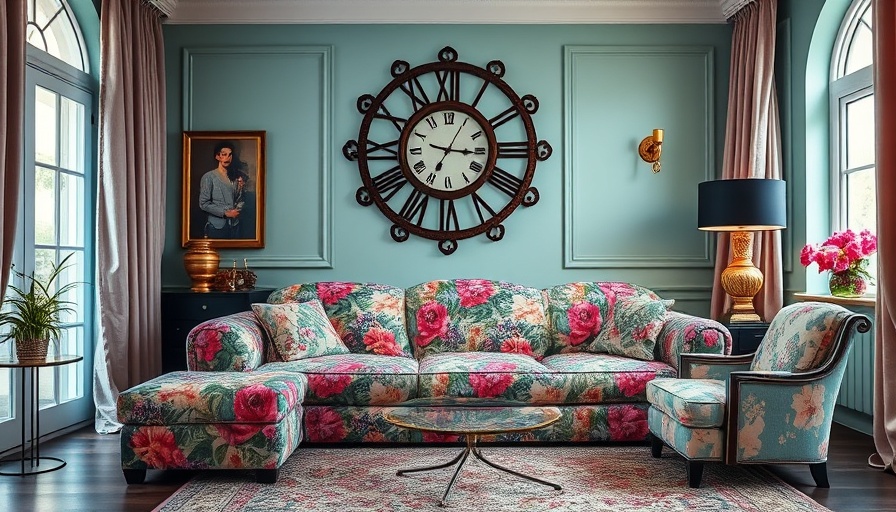
Exploring the Vibrant World of Maximalist Home Decor
As the saying goes, "Always put in one controversial item. It makes people talk." This ethos, articulated by Dorothy Draper, the renowned interior designer, serves as a guiding principle for anyone looking to add a flair of boldness to their home. Draper, famous for her striking use of color and pattern, transformed the art of interior decorating into something engaging and evocative, asserting the profound impact a well-decorated space can have on our mood and daily lives.
Understanding the Psychology of Color in Design
Color can evoke powerful emotions; it’s why we feel uplifted by the robin’s egg blue sky or the golden hue of a daffodil in spring. Draper's philosophy revolved around harnessing this emotional response. By using vibrant colors, she aimed to create environments that not only looked good but felt good. For instance, her fruits and flowers patterns drew inspiration from nature, merging the outdoors with indoor spaces to enhance not just aesthetics but overall well-being.
The “Fifth Wall”: A Canvas for Creativity
Draper was emphatic about the potential of the ceiling, calling it the "fifth wall." Rather than settling for an overlooked expanse of white, she encouraged decorating this often-neglected space with colors and designs that could add drama and charm. Using a striking aqua-blue, reminiscent of a clear sky, or a glossy black finish would create contrasts that catch the eye and provoke interest. Whatever the choice, the invitation to look up invites an awareness of the overall design narrative at play in the home.
Integrating Nature into Your Living Space
Draper took cues from the surroundings of her projects, infusing the spirit of nature into her designs. One of her well-known patterns, Brazilliance, reflected the lush environment of Brazil, while the Rhododendron pattern embodied the local flora of West Virginia. By bringing nature indoors, one can create a connection to the outside world and evoke the tranquility or vibrancy one associates with their favorite landscapes. Emulating this idea can inspire personal touches through choosing floral designs that resonate with individual experiences.
Future Trends in Maximalist Design
As we move further into an era where personalization and uniqueness are valued, the principles of maximalism championed by Draper remain relevant. With the rise of sustainable and eco-friendly materials, future maximalist trends are likely to embrace not just vibrant colors and patterns, but also include elements that reflect our commitment to sustainability. Local artisans might create one-of-a-kind pieces that fuse color and natural materials, allowing maximalism to evolve while retaining its essence of individuality.
Incorporating Maximalist Principles into Any Space
Adopting a maximalist approach doesn’t require a complete overhaul of one’s home. Start small; introduce bold accent colors through cushions, curtains, or artwork. Create a gallery wall that showcases a mix of different frames and colorful prints or perhaps slowly transition your ceiling with a fresh coat of paint or wallpaper. The key is to reflect your personality and what resonates with you. Maximalism isn’t just a style; it’s a declaration of who you are.
The Lasting Legacy of Dorothy Draper
Draper’s influence persists in the designs we create today, encouraging us to make bold choices that evoke both emotion and expression. This legacy teaches us that vibrant interiors can promote joyful living, leading to spaces that tell a story through color and personal touches. By following in her footsteps and embracing the philosophy of inclusion, spontaneity, and boldness in color and pattern, we can craft homes that welcome not just ourselves but the voices of those who enter.
If you’re feeling inspired after reflecting on the principles of Dorothy Draper, don’t hesitate to explore your creativity in home decor. Selecting bold colors and distinct patterns doesn’t only beautify a space; it infuses your home with your unique personality.
 Add Row
Add Row  Add
Add 




 Add Row
Add Row  Add
Add 


Write A Comment